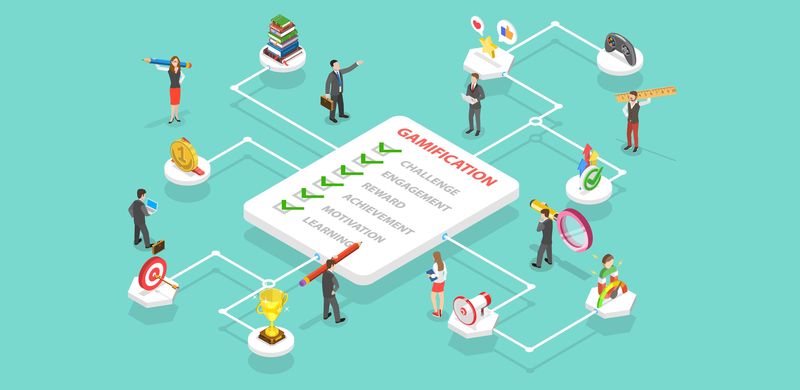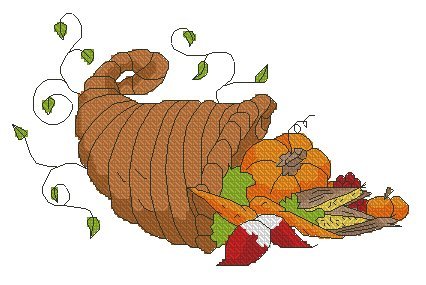Feel like your online store could do better? eCommerce gamification is a fun but slightly overlooked method of fixing some of the most common yet challenging online marketing obstacles.
What is gamification?
Gamification uses a sense of reward and achievement to encourage someone to take the desired action. Despite having the word ‘game’ in it, eCommerce gamification does not mean having a game of Tetris or Angry birds pop up in front of your customer. It would be cool, though.
Gamifying the way customers shop in your online store means using game-like techniques to motivate your audience towards a desired behavior for your business and offer them rewards – like offering a discount code or completing a challenge for participating in an exclusive sale. In short, eCommerce gamification is a process of enhancing your service for the sake of creating additional value for your customers, fostering an ongoing engagement, and generating sales.
Way more sales…
A brief history of gamification
Gamification has its roots way back in history. Over the centuries, the role of games in teaching children was vital, and this process had many forms. The term ‘gamification’ first appeared back in 2002 and was coined by Nick Pelling, a British-born computer programmer, and investigative writer best known as the creator of the 1984 game Frak!
If you start looking, you’ll find gamification has long been embedded in our daily shopping experiences; although sometimes the approaches are so subtle the consumers are unaware they’re even participating in a game.
Remember those infomercials back in the day with their call-to-action: “Call now to get a special price” or “Only today, 10 CDs with your favorite 80s superhits for only $79.99” This demonstrated the central principle to gamification: urgency.
Or, look at loyalty cards that strengthen customer allegiance by offering rewards for using their brand’s card. It doesn’t matter whether the bonus points consumers earn hold no worth outside of the card rewards or if it takes an excessive amount of purchases to earn a meaningful amount of points. Still, the consumers believe they are winning by utilizing the cards, incentivizing them to stay loyal to a specific brand.
Get started today!
Online entrepreneurs are facing challenges
Almost every online marketer out there has experienced different hurdles along the way. Abandoned carts, for example. Raise your hand if you’ve found yourself adding things, stuff and nicknacks to an online cart, only to abandon it upon the checkout later because your better sense prevails. Then you either delete your cart or simply close the tab and move on. Because I certainly have.
Thus the abandoned cart is born. Cart abandonment is widespread across sectors; eCommerce fashion faces the most significant abandonment issues, with the abandonment rate being 64%. No amount of persuasion can get you to buy those items you added in a fleeting moment of either a late-night scroll through your favorite fashion store or just a stress-fueled want. I’m an after-hours shopper myself, frequently finding myself under a blanket, ready to catch the z’s, but with one eye open, adding things to my virtual cart. And your customers are no different.
Indeed, your customers are the same. So, unless you offer the products in your customer’s cart at a heavily discounted price and many other perks such as free shipping, it’s highly unlikely the customer will care and make the purchase.
Why do customers ignore marketing efforts?
Present-day marketing does have a few deficiencies. Sometimes, our best efforts may come across as a bit too pushy and trying too hard, but at the same time – weak and unconvincing. To “err” is human, of course; However, this can be expensive and time-consuming.
What do you mean by “trying too hard,” you might ask. You see, what you yourself view as persistence and brilliant marketing, your customers can perceive as trying too hard. And unless there are some serious benefits, discounts, or other appealing perks, your efforts can be rendered futile.
Choice overload
Another challenge that today’s online marketers face is that the eCommerce realm is filled with more options than ever. Thus, the struggle of plenty is real. Having a ton of options can be disadvantageous since customers can and are suffering from information overload, making it hard to decide. A strategy that ensures that your customers are helped and engaged, leading to simpler decision-making, and is as straightforward as can be is eCommerce gamification.
Why is eCommerce gamification useful?

Well, for many reasons, actually. For one, it improves customer engagement and can help your customers learn and understand key points and advantages of an offering through reward. eCommerce gamification can also provide a less aggressive introduction to the online sales process, as well as add personality to a brand. Gamification can help provide differentiation to competitors and aid customer data gathering and understanding.
Fact: Increasing numbers of businesses and platforms use the eCommerce gamification strategy to entice customers further down sales funnels. Social media outlets are big on this pattern (freemium games) – But so are big enterprises like Nike.
eBay and the inception of eCommerce gamification
When commerce evolved, and eCommerce came to be, eBay was one of the first to introduce eCommerce Gamification in their business model.
eBay’s bidding system spoke to the shoppers’ competitive nature and created that sense of urgency that triggered impulsive purchases. I remember some thirteen years ago sitting by my desktop computer and anxiously bidding on something ridiculous. I guess it was a silly novelty gadget that I would have absolutely no use of, but I simply *had* to have it. Because the time was running out. When I won, the sense of victory was like nothing else.
So what once was a staple of TV infomercials now translated well to the world wide web where purchases could be made on the go rather than visiting a brick and mortar store to participate.
By only allowing a finite amount of deals or establishing a timeframe on how long shoppers have to acquire, shoppers became motivated to secure a bargain before it ran out.
Another excellent example of an eCommerce business that relied on time-sensitive gaming elements is Groupon.
Also, Black Friday and Cyber Monday deals further demonstrate the effect of perceived urgency. And while urgency is the oldest consumer gaming technique, it’s still effective in driving spur-of-the-moment sales.
Get started today!
How to implement eCommerce gamification in your Printify business
You’ve got a steady stream of online shoppers. You’ve also got an entire online realm of competition. So how do you rise above the competition to get your consumers coming back to you time and time again?
Gamification strategies can easily be applied to any online business. Some of today’s most well-known forms of eCommerce gamification are reward programs and deals based on urgency. Yes, that still works.
However, it’s essential to identify your goals before coming up with an eCommerce gamification campaign so you know how to aim for success and measurable results.

Turn a one-time shopper into a returning customer.
One-timers can become loyal shoppers via reward programs that offer points for each purchase.
Increase social media engagement.
eCommerce gamification works beautifully with social media. Offering rewards for sharing product reviews on social media or interacting with a shop on social media significantly boosts engagement.
Incorporate real games.
Upon incorporating eCommerce gamification strategies into your online business, you don’t necessarily have to reinvent the bicycle. You can be pretty straightforward and include real games into your strategy to see how your audience receives them, for example, virtual scratch-off cards.
Example: Gwynnie Bee, the subscription service for garment and accessory renting, offers a scratch-off lottery ticket, a popular eCommerce Gamification marketing tactic that incorporates real-world games to reward email recipients and expand their brand.
Implement a game-like loyalty reward program.
Reward your customers for being loyal by offering them a loyalty reward program. Loyalty reward programs are gamified by design, as we’ve learned to know in the brief history of gamification. So, the more money your shoppers spend on your print-on-demand goodies, the more points and rewards they can earn. When customers eventually accumulate enough points, they can cash them in for significant discounts on future purchases.
Example: Learn from Starbucks and their “My Starbucks Rewards” loyalty program. As coffee drinkers increase their spending, Starbucks rewards them with points to put towards their next purchases. Their example tells us how the purchasing process encourages customers to keep coming back, thus earning even more points to put towards future rewards.
Encourage customer interaction.
One of eCommerce gamification’s goals is to boost customer interaction – you could give rewards to participants who engage on your platform or website, encouraging future interaction.
Example: The popular language learning app Duolingo created a four-point gamification strategy to make learning a foreign language more interactive and joyful. Learning a new language is time-consuming and often frustrating, so Duolingo asks its users to set small daily goals in order to help break down the task and make it less arduous. These small tasks bring users back every day, and the more consistent you are, the more rewards you get. When I learned Spanish with Duolingo, I was eager to earn the achievement badges, thus wanting me to keep on keeping on.
Integrate eCommerce gamification into your print-on-demand business by running a contest.
Want to expand on your brand awareness? Run a contest! Contests are exciting, and people love participating in them. Especially, if your prize pool is yummy. Great contests increase the visibility of your brand and can drive massive customer interaction – you’ve definitely seen contest entries on your social media, thus becoming acquainted with a brand you maybe never knew before.
Example: McDonald’s multimillion-dollar Monopoly campaign. This annual contest has raised humongous brand awareness for the company for many years. A $65 million prize grabbed headlines back in 2017. The beauty of it is that everyone can participate as long as they visit McDonald’s and make a purchase to gather the game pieces. And by looking at the prizes, you can probably guess they profit handsomely.
Create a quiz to test your consumers' wits.
Quizzes boast high levels of interaction. From brand-related trivia to popular TV show quizzes (as long as they’re somehow related to your brand – don’t play cheap tricks just to entertain your customers. That can lead to the “trying too hard” that we mentioned in the beginning), these experiences can boost engagement rates and establish a strong brand image.
Example: The popular eyewear company Warby Parker created a product recommendation quiz to help its customers identify the perfect pair for their faces. Their quiz increased website traffic and brand awareness by leaps and bounds and generated $1 million in revenue and a whopping 29.5k lead conversions.
eCommerce Gamification strategies can be applied to online businesses in any sector and of any size. And, even if you don’t know how to code and make a spinny wheel, virtual scratcher lotto ticket, or another form of fun game, you can educate yourself and be aware of those trying to game you. Come up with social media contests or other forms of eCommerce Gamification to increase your engagement, your brand awareness, and don’t forget the pillar of gamification: urgency.
Get started today!
The post How to use eCommerce gamification to boost your sales appeared first on Printify.







